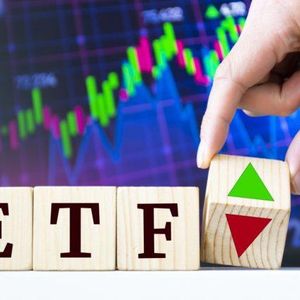Are you wondering what the mood is like in the digital asset space? The Crypto Fear and Greed Index is a popular tool that attempts to bottle the collective emotions of the cryptocurrency market into a single number. As of May 7, this index, provided by Alternative, registered a reading of 67. This marks an increase of eight points from the previous day, but crucially, it keeps the market firmly planted in the ‘Greed’ zone. Understanding the Crypto Fear and Greed Index At its core, the Crypto Fear and Greed Index aims to give investors a clearer picture of prevailing market sentiment. It operates on a scale from 0 to 100: 0: Extreme Fear – Indicates investors are very worried, potentially a buying opportunity. 50: Neutral – The market sentiment is balanced. 100: Extreme Greed – Suggests the market is overheating, potentially signaling a correction is due. The philosophy behind the index is rooted in contrarian investing principles: extreme fear often precedes a market bottom, while extreme greed can signal a market top. Warren Buffett’s famous quote, “Be fearful when others are greedy and greedy when others are fearful,” perfectly encapsulates this idea. But how does this single number get calculated? The index isn’t based on just one factor. It aggregates data from six different sources, each weighted differently to provide a holistic view of the market mood: Volatility (25%): Measures the current volatility and maximum drawdowns of Bitcoin compared to its average values. Higher volatility often signals fear. Market Momentum/Volume (25%): Compares the current volume and market momentum to recent averages. High buying volume in a positive market often suggests greedy behavior. Social Media (15%): Analyzes sentiment from relevant hashtags and mentions on platforms like Twitter. High engagement with positive sentiment can indicate greed. Surveys (15%): Polls users on their market sentiment (though this factor is currently paused by Alternative). Bitcoin Dominance (10%): The percentage of the total market capitalization that belongs to Bitcoin. Increasing Bitcoin dominance can sometimes signal fear as investors move towards the perceived safety of BTC, or it can indicate greed if BTC is leading a bull run. Google Trends (10%): Looks at search queries related to Bitcoin and other cryptocurrencies. Spikes in searches for terms like “Bitcoin price manipulation” might indicate fear, while searches for “buy Bitcoin” could indicate greed. What Does Current Crypto Market Sentiment at 67 Mean? A reading of 67 places the index firmly in the ‘Greed’ zone. This suggests that market participants are feeling optimistic, confident, and perhaps a bit euphoric. The eight-point jump from the previous day indicates rapidly improving sentiment. When the index is in the greed zone, it typically means: High Optimism: Investors are generally positive about future price movements. Increased Buying Pressure: More people are looking to buy, driving prices up. Potential for Overextension: The market might be becoming overheated, increasing the risk of a sudden correction. While greed isn’t inherently bad – it’s a natural part of bull markets – extreme greed can be a warning sign. Historically, periods of extreme greed (readings above 80) have often preceded significant price pullbacks as the market runs out of new buyers and early investors take profits. The Index’s Link to Bitcoin Price Movements The Bitcoin Price is often closely correlated with the Crypto Fear and Greed Index. As the dominant cryptocurrency, Bitcoin’s price action significantly influences overall market sentiment. When Bitcoin rallies strongly, the index tends to climb towards greed. Conversely, sharp drops in Bitcoin’s price usually send the index plummeting into fear. The index uses Bitcoin’s volatility and market momentum as key components, directly linking its calculation to BTC’s performance. Therefore, tracking the index provides valuable context for understanding the emotional drivers behind recent Bitcoin price movements. A rising index alongside a rising Bitcoin price suggests the rally is fueled by increasing optimism and participation. Navigating the Cryptocurrency Market with the Index The Cryptocurrency Market is known for its rapid and often dramatic swings. Understanding the prevailing sentiment, as indicated by the Fear and Greed Index, can be a valuable tool for investors navigating these volatile waters. However, it’s crucial to view the index not as a definitive buy or sell signal, but as one piece of a larger puzzle. Here are some ways investors might use the index: Contrarian Indicator: Some investors use high greed readings as a potential signal to reduce risk or take profits, and high fear readings as a signal to look for buying opportunities. Confirmation Tool: Others use the index to confirm signals from other technical or fundamental analysis methods. If your analysis suggests caution and the index is showing high greed, it might strengthen your conviction. Emotional Thermometer: Simply observing the index can help you gauge your own emotions. Are you feeling overly optimistic just because the index is high? Or overly fearful when it’s low? This self-awareness is key in investing. Remember, the index is a reflection of past and current sentiment, not a prediction of the future. Market dynamics can change rapidly. Decoding Investor Psychology Through Fear and Greed At its heart, the Investor Psychology driving the cryptocurrency market is a powerful force. The Fear and Greed Index is essentially a barometer for this collective psychological state. When fear dominates, panic selling can cascade, driving prices down further. When greed takes over, FOMO (Fear Of Missing Out) can lead to irrational buying and speculative bubbles. Understanding that market cycles are often driven by shifts between fear and greed is fundamental to long-term investing success. The index provides a quantifiable way to observe these shifts in real-time. A reading of 67 suggests that many investors are currently more influenced by the potential for further gains (greed) than the risk of losses (fear). Challenges and Limitations: The index is primarily focused on Bitcoin, although it reflects the broader market mood due to BTC’s dominance. The weighting of components is determined by the provider and may not capture all relevant factors. Sentiment can change extremely quickly, making the index a snapshot rather than a constant state. It should never be the sole basis for investment decisions. Conclusion: What Does the 67 Reading Tell Us? The Crypto Fear and Greed Index sitting at 67 on May 7, firmly in the ‘Greed’ zone, indicates a significant level of optimism currently pervading the market. While this reflects positive price momentum and improving sentiment, it also serves as a reminder that exuberance can be a precursor to pullbacks. Savvy investors use this information as context, combining it with other forms of analysis to make informed decisions, rather than being swept away by the prevailing emotion. To learn more about the latest crypto market trends, explore our article on key developments shaping Bitcoin price action.
















